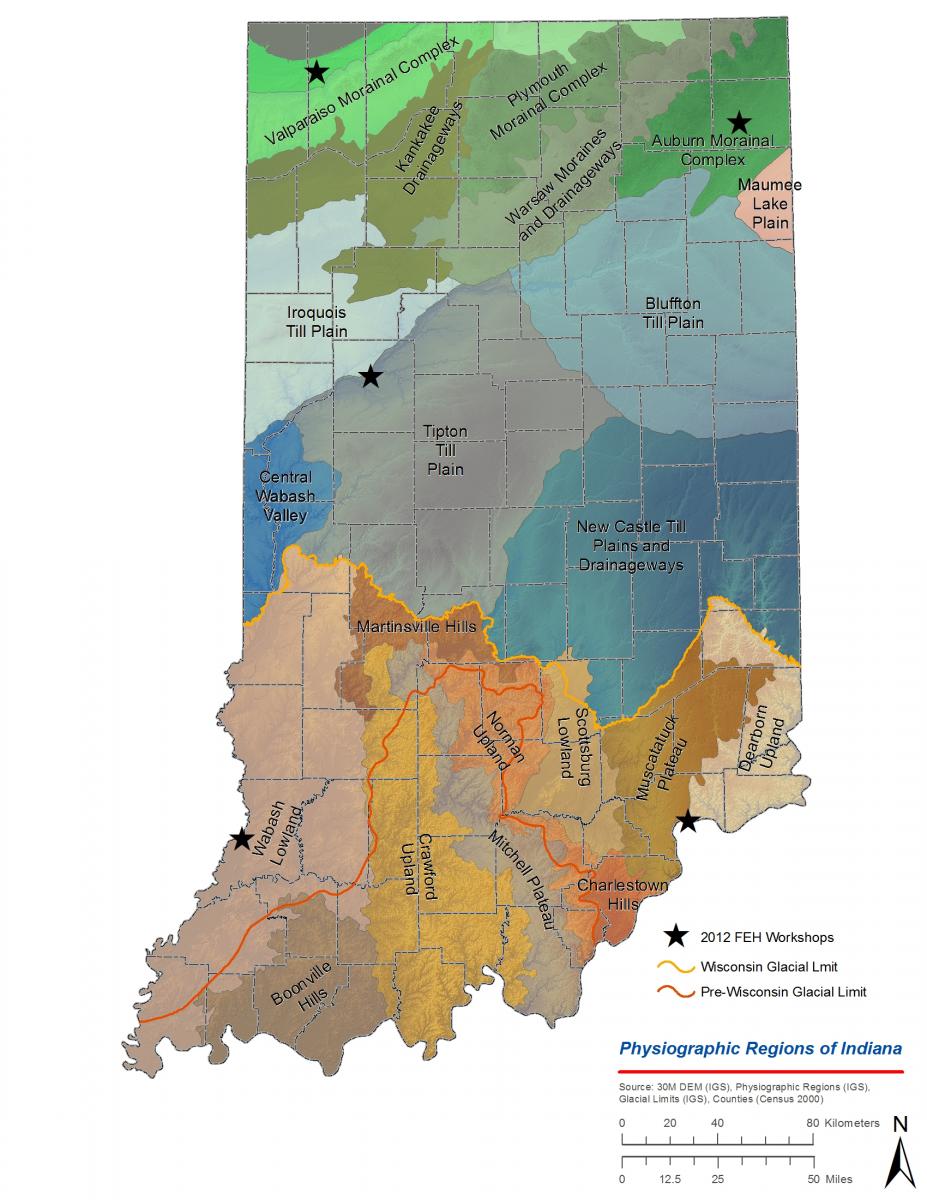Fluvial erosion hazards
While properties adjacent to streams and rivers often offer esthetic qualities that make them desirable for development, many also come with some degree of risk as a result of flooding. When flooding disasters occur in Indiana, inundation-related losses can be substantial. Fortunately, the National Flood Insurance Program (NFIP) has greatly reduced these losses by guiding floodplain management and mitigation practices as they relate to damage associated with flood-water inundation. However, it must be recognized that inundation-related damages are not the only flood-related hazard associated with rivers, streams, and floodplains.

The “fluvial erosion hazard” (FEH) also represents a significant concern in areas where human development and infrastructure, are established in close proximity to natural waterways. In mild cases, this may be seen as the gradual loss of a farm field or the undermining of a fence row when gradual channel migration consumes private land. In more severe cases, the FEH risk may threaten properties and/or structures to the degree that they become uninhabitable or even lost to natural channel processes. Where interaction between human activities and natural waterways within communities exist, those communities must be mindful of the tendency of waterways to shift their position across the landscape. This knowledge can help a community anticipate FEH damages thereby making the community more resilient to flood impacts.

The Indiana Silver Jackets Hazard Mitigation Task Force has initiated a multi-agency program to identify, study, and provide mitigation planning resources for individuals and communities who would like to adopt FEH avoidance strategies. The FEH effort being undertaken in Indiana is modeled after an FEH program developed by the Vermont Department of Environmental Conservation and will greatly benefit from the well documented strategies, protocols, and products established within that program.
While supported by all the agencies and groups active in the Indiana Silver Jackets, three participating groups share the primary responsibilities for implementing this program: the Center for Earth and Environmental Science (CEES), the Polis Center (Polis), and the U.S. Geological Survey (USGS) – Indiana Water Science Center. Working with shared resources, staff, and goals, these three groups are currently conducting a broad variety of science, mapping, and educational activities related to the FEH program in Indiana. Funding for this program has been provided by the Indiana Office of Community and Rural Affairs (OCRA) through a grant provided by U.S. Department of Housing and Urban Development (HUD).


